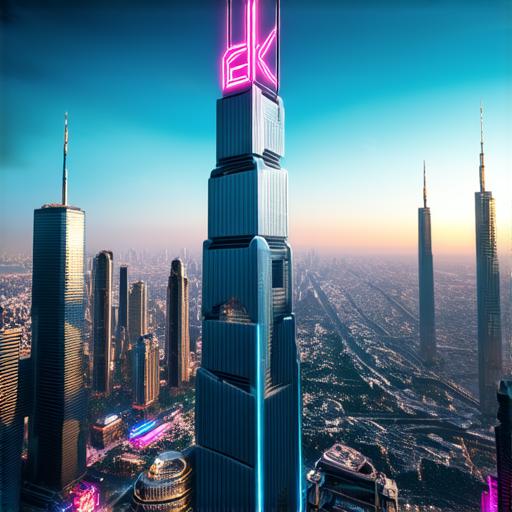
Unity 3D is one of the most popular game engines out there, and for good reason. With its intuitive interface, powerful tools, and vast library of assets, it’s no wonder that developers of all skill levels are flocking to this engine. However, creating assets for Unity 3D can be a daunting task, especially if you’re new to the game development industry. In this article, we will explore some best practices for creating assets in Unity 3D and provide you with the knowledge you need to create engaging and immersive experiences for your players.
Understanding Assets in Unity 3D
Before we dive into the process of creating assets for Unity 3D, it’s important to understand what assets are and how they work. In Unity 3D, an asset is any piece of content that you can use in your project, such as a model, texture, script, or animation clip. Assets are organized into folders, which you can create and customize to suit your needs.
There are two types of assets in Unity 3D: built-in and user-created. Built-in assets are provided by the engine and include things like basic shapes, materials, and particle effects. User-created assets are created by the developer and can include anything from custom models to complex scripts.
Creating Assets in Unity 3D
Now that we have a better understanding of what assets are, let’s take a look at some best practices for creating them in Unity 3D.
1. Use the Right Tools
One of the most important aspects of creating assets in Unity 3D is using the right tools. There are many tools available that can help you create high-quality assets quickly and efficiently. Some popular tools include Blender, Maya, Photoshop, and Substance Painter. Each of these tools has its own strengths and weaknesses, so it’s important to choose the one that best suits your needs.
2. Optimize Your Assets
Optimizing your assets is essential for ensuring that they run smoothly in Unity 3D. This includes reducing the polygon count of your models, compressing textures, and minimizing the use of particle effects. You can also use tools like Unity’s built-in profiler to identify performance bottlenecks and optimize your assets accordingly.
3. Create Modular Assets
Creating modular assets is a great way to save time and resources when creating assets for Unity 3D. Modular assets are created by breaking down larger objects into smaller, reusable parts. This allows you to quickly and easily combine these parts to create new and unique assets.
4. Use Texture Atlases
Texture atlases are a great way to optimize your textures and reduce the number of draw calls required by your game. A texture atlas is a single image file that contains multiple smaller images, which can be mapped to different parts of a 3D model. This allows you to use fewer textures while still achieving the same level of detail.
5. Create Animations
Animations are an essential part of any game, and creating animations in Unity 3D is no exception. Unity has a powerful animation system that makes it easy to create complex animations for your characters and objects. You can also use third-party tools like Mixamo to create high-quality animations quickly and efficiently.
6. Create Sound Effects
Sound effects are an important aspect of creating an immersive experience for your players. There are many tools available that can help you create high-quality sound effects, such as Audition, GarageBand, and FMOD. You can also use Unity’s built-in audio system to add sound effects to your game.
Case Studies
Now that we have covered some best practices for creating assets in Unity 3D, let’s take a look at some real-world examples of how these principles are being applied.
1. The Elder Scrolls V: Skyrim
The Elder Scrolls V: Skyrim is one of the most popular games of all time, and it was built using Unity 3D. The game features stunning graphics, immersive gameplay, and a vast world to explore. One of the keys to the game’s success was its use of modular assets. By breaking down the game world into smaller, reusable parts, the developers were able to create a massive and detailed environment without sacrificing performance.
2. Shadow of the Colossus
Shadow of the Colossus is another example of how Unity 3D can be used to create stunning visual effects. The game features realistic lighting, weather effects, and particle effects that add depth and complexity to the game world. One of the keys to achieving these effects was the use of texture atlases. By combining multiple smaller textures into a single larger image, the developers were able to achieve the same level of detail while reducing the number of draw calls required by the game.
3. PUBG Mobile
PUBG Mobile is a hugely popular mobile game that was built using Unity 3D. The game features fast-paced action, realistic graphics, and a massive multiplayer mode. To achieve these effects, the developers used a combination of modular assets, texture atlases, and optimized animations. By breaking down the game world into smaller parts and using textures to combine multiple smaller images, the developers were able to create a large and detailed environment that runs smoothly on mobile devices.
Summary
Creating assets for Unity 3D can be a daunting task, but by following best practices and using the right tools, you can create engaging and immersive experiences for your players. Whether you’re a beginner or an experienced developer, there is always something new to learn when it comes to creating assets in Unity 3D. So go ahead, grab your favorite tool, and start creating!
FAQs
Here are the FAQs section with the corrected HTML code:
1. What are the best tools for creating assets in Unity 3D?
Some of the best tools for creating assets in Unity 3D include Blender, Maya, Photoshop, and Substance Painter. Each of these tools has its own strengths and weaknesses, so it’s important to choose the one that best suits your needs.
2. How can I optimize my assets for better performance in Unity 3D?
To optimize your assets for better performance in Unity 3D, you can reduce the polygon count of your models, compress textures, and minimize the use of particle effects. You can also use tools like Unity’s built-in profiler to identify performance bottlenecks and optimize your assets accordingly.
3. What are modular assets, and how can I create them in Unity 3D?
Creating modular assets is a great way to save time and resources when creating assets for Unity 3D. Modular assets are created by breaking down larger objects into smaller, reusable parts. This allows you to quickly and easily combine these parts to create new and unique assets.

4. What are texture atlases, and how do they work?
Texture atlases are a great way to optimize your textures and reduce the number of draw calls required by your game. A texture atlas is a single image file that contains multiple smaller images, which can be mapped to different parts of a 3D model. This allows you to use fewer textures while still achieving the same level of detail.
5. How can I create animations in Unity 3D?
Animations are an essential part of any game, and creating animations in Unity 3D is no exception. Unity has a powerful animation system that makes it easy to create complex animations for your characters and objects. You can also use third-party tools like Mixamo to create high-quality animations quickly and efficiently.

